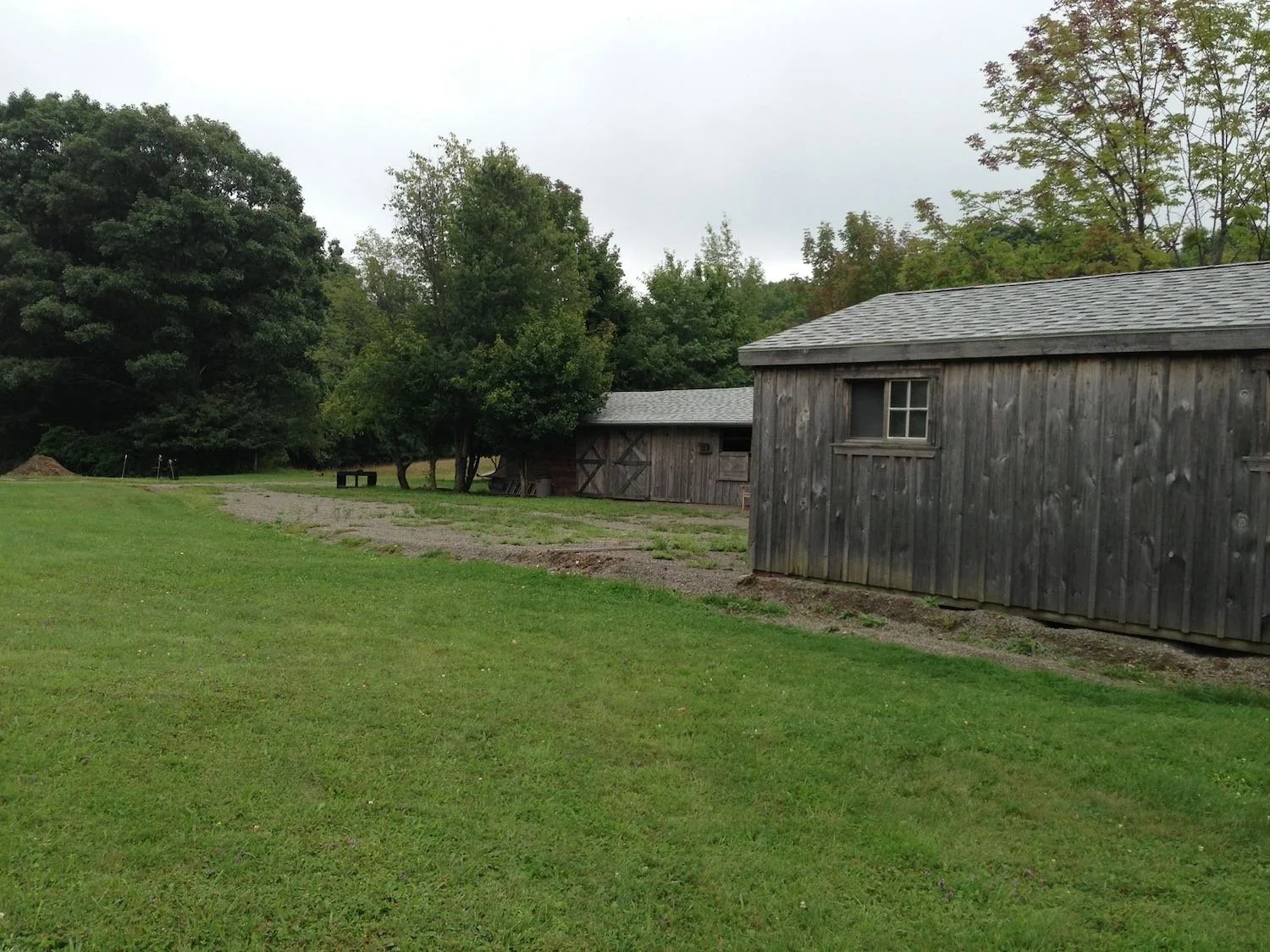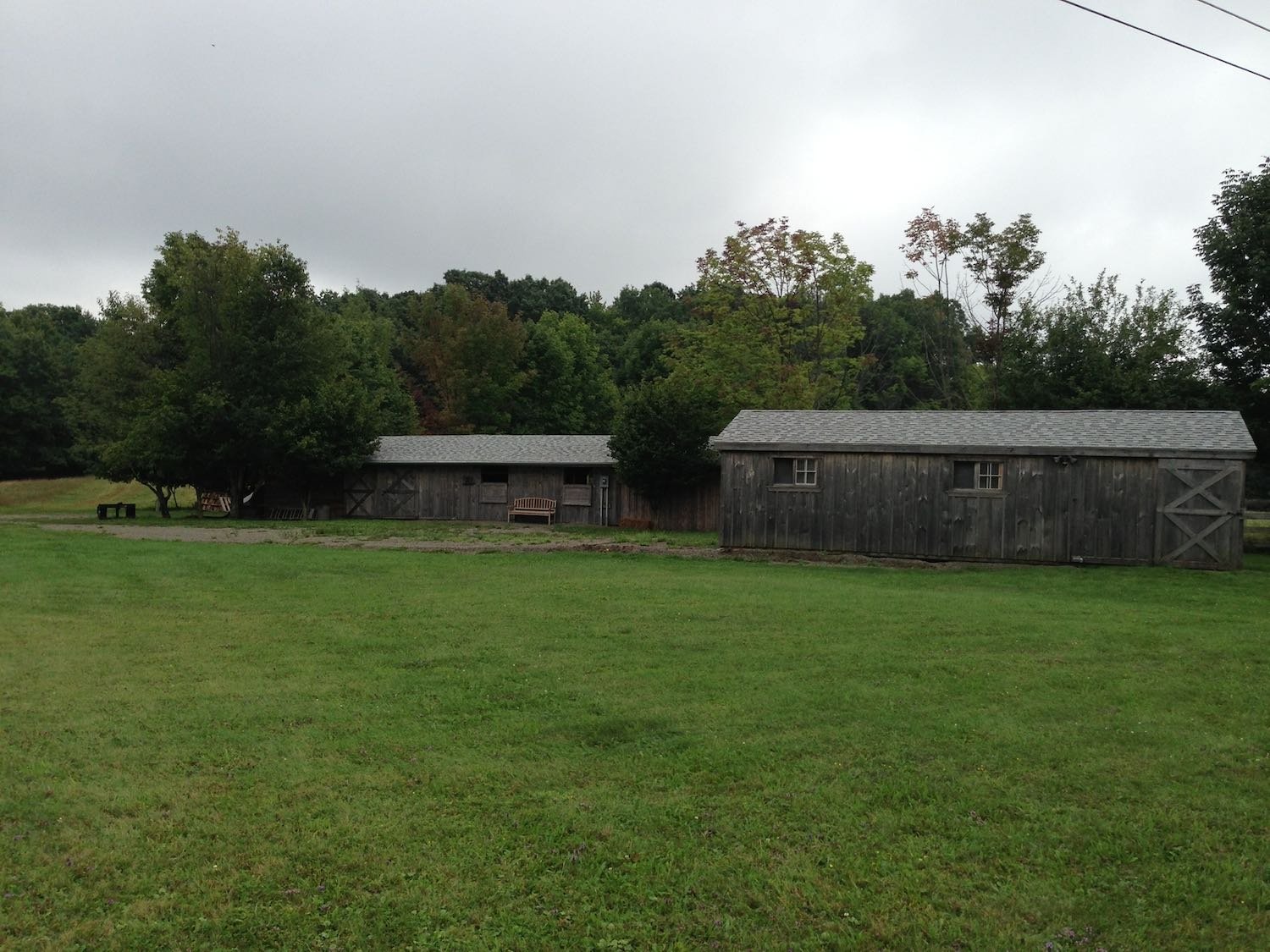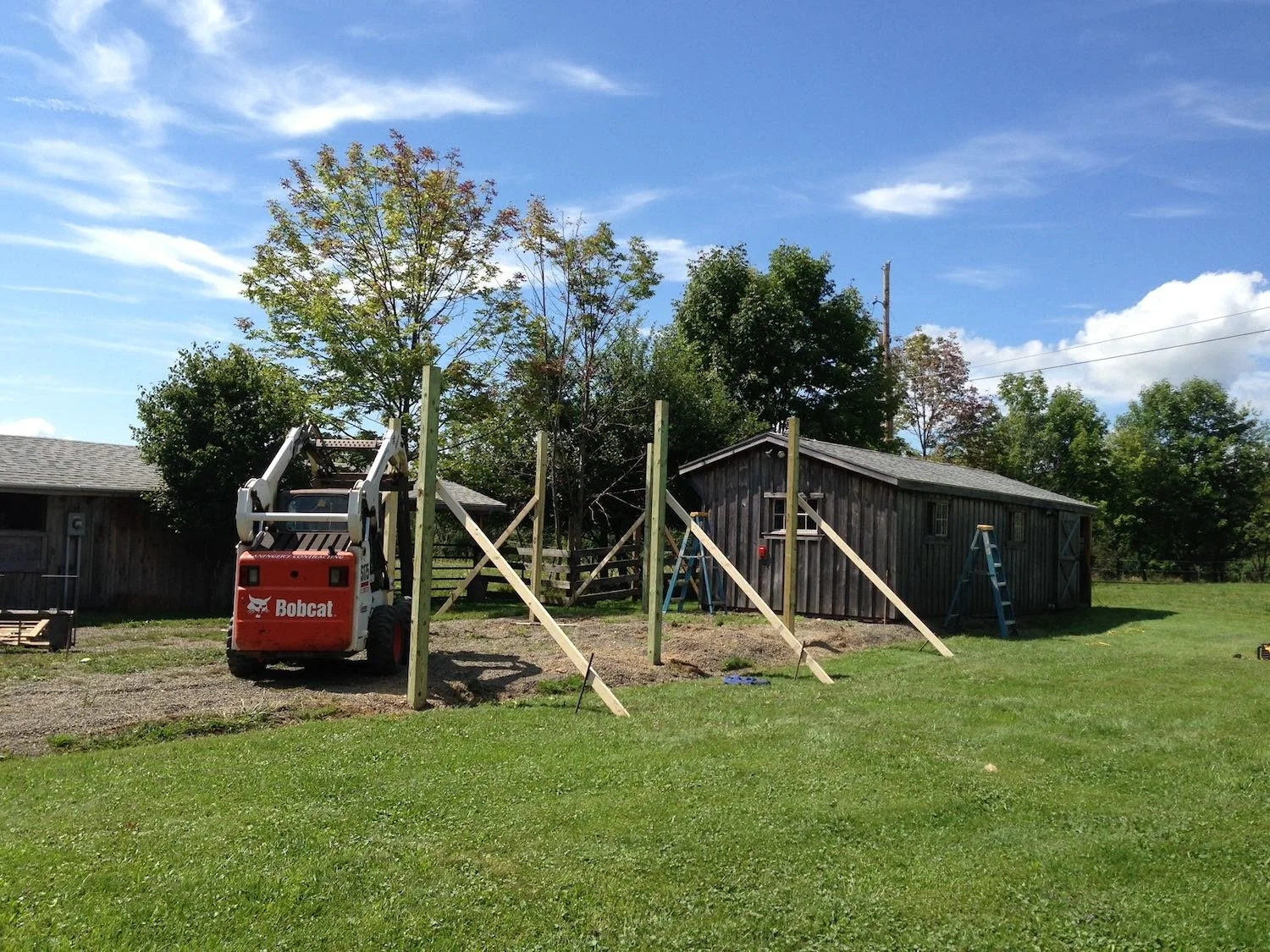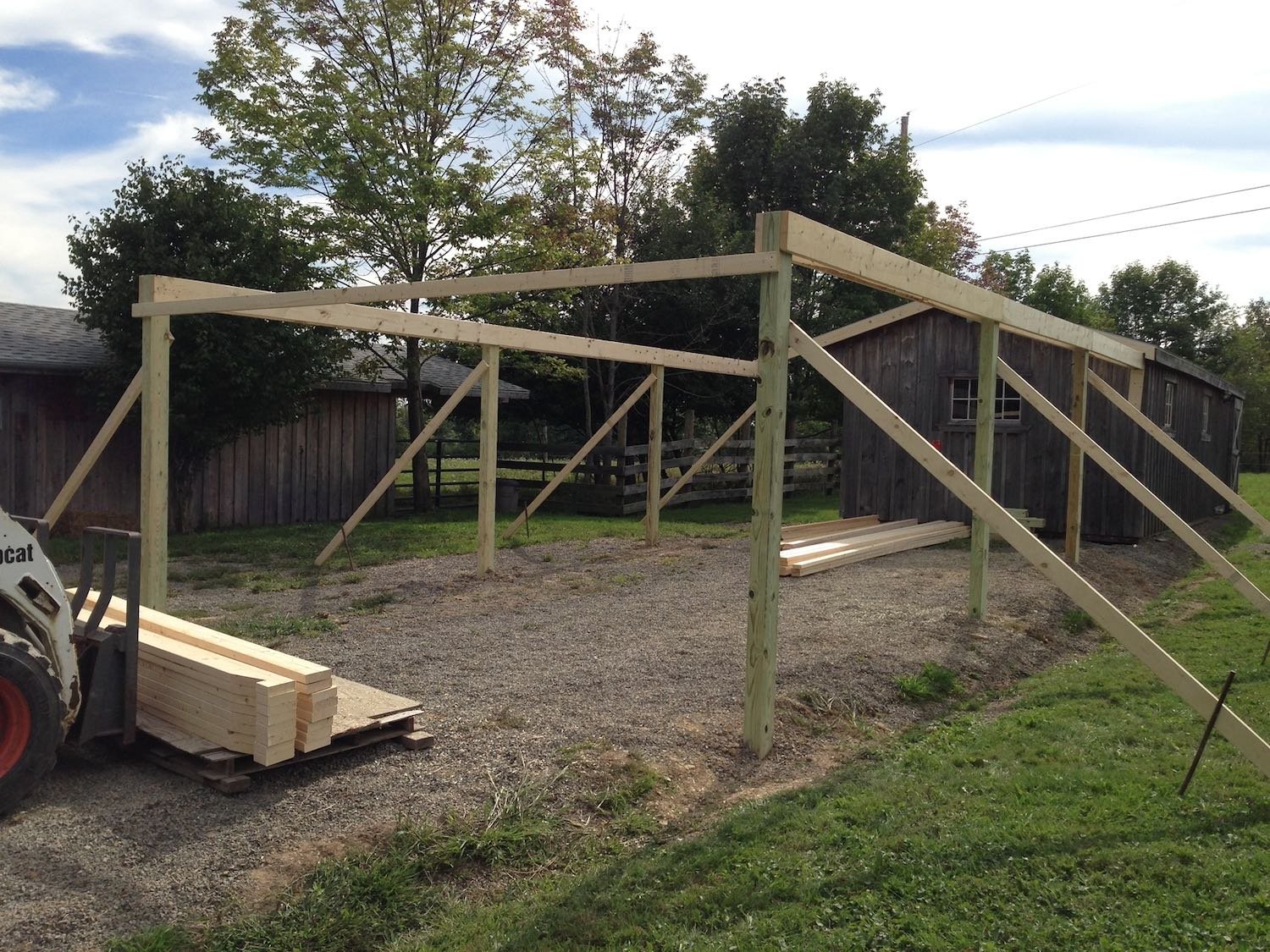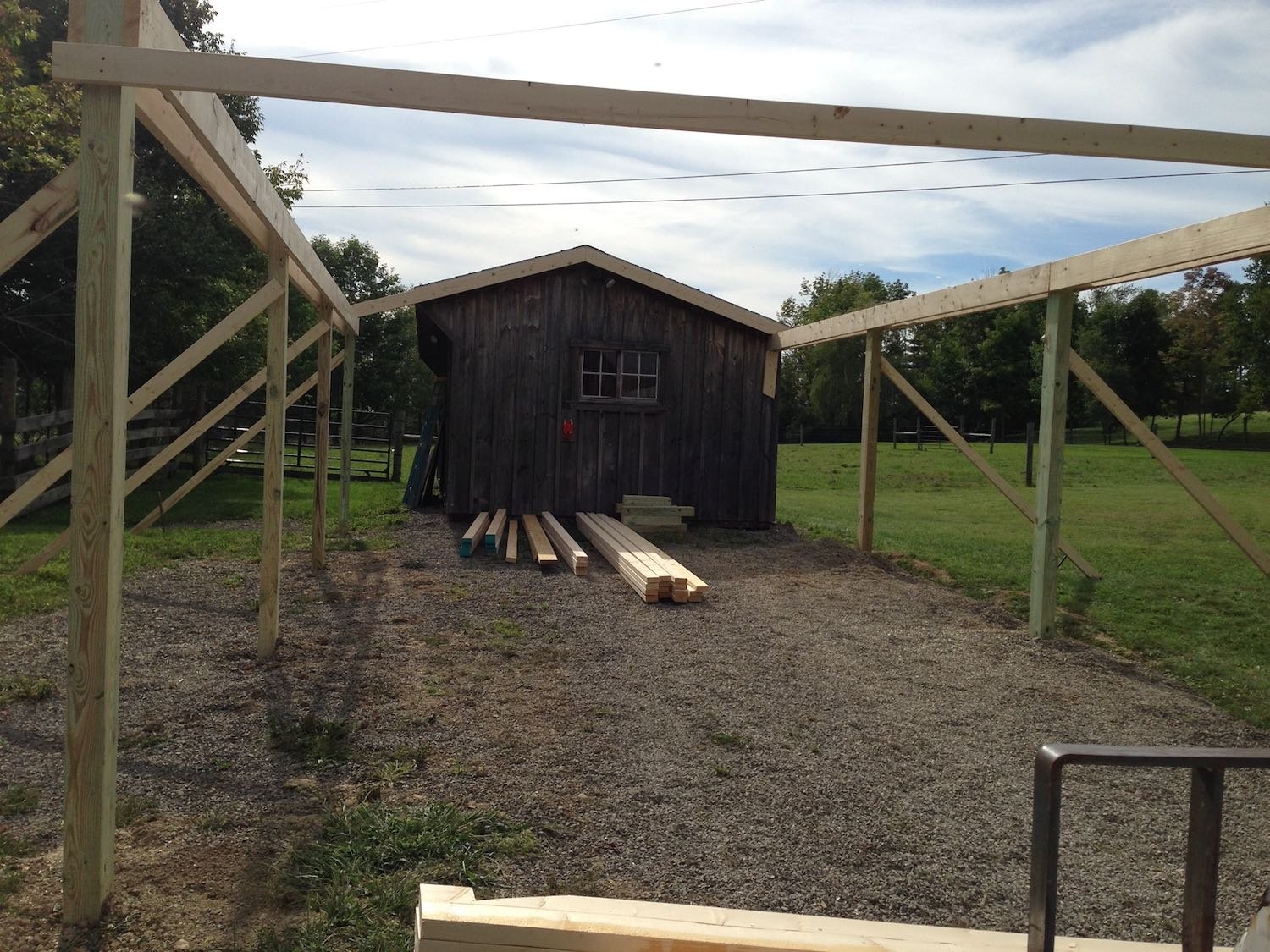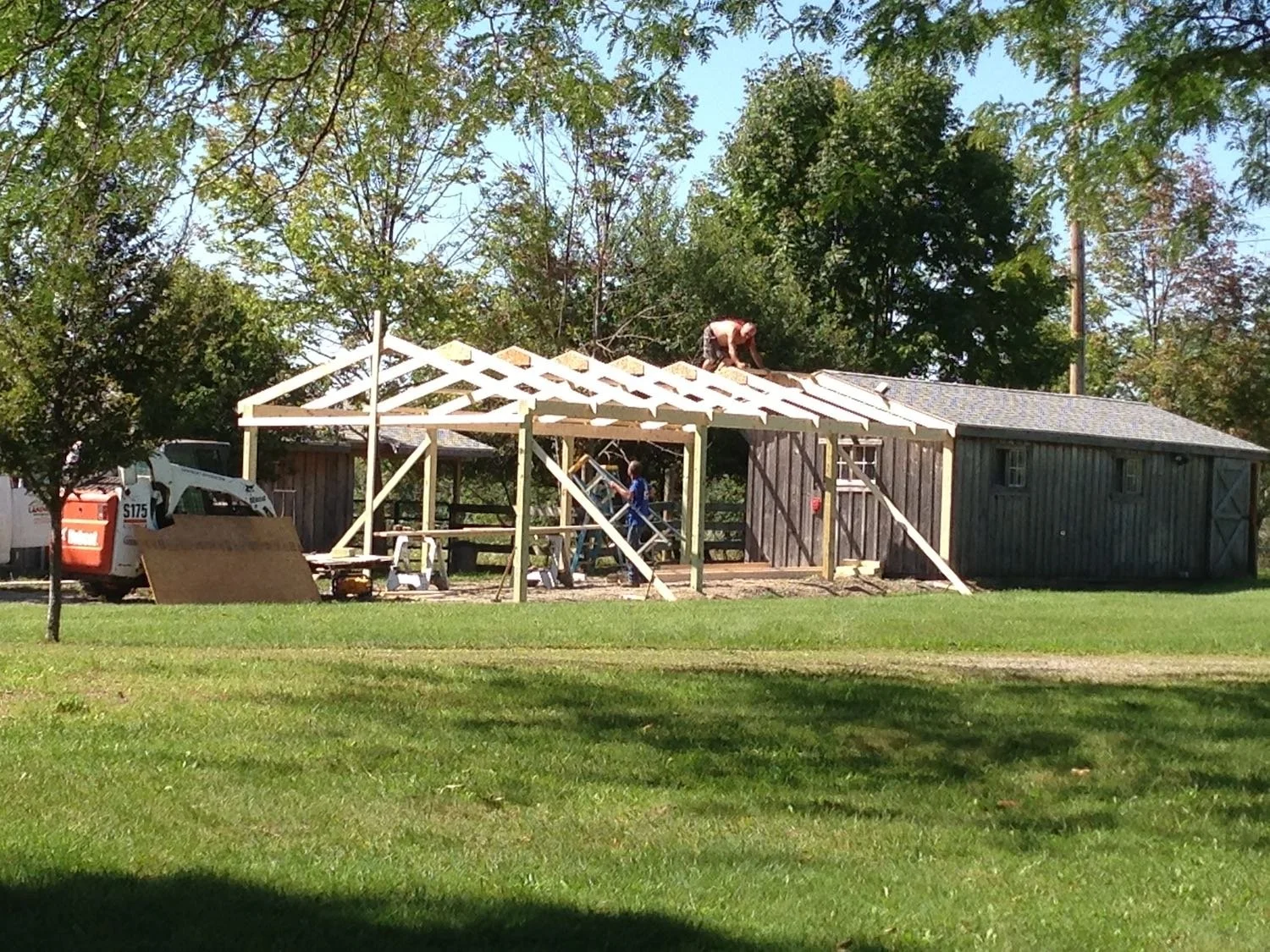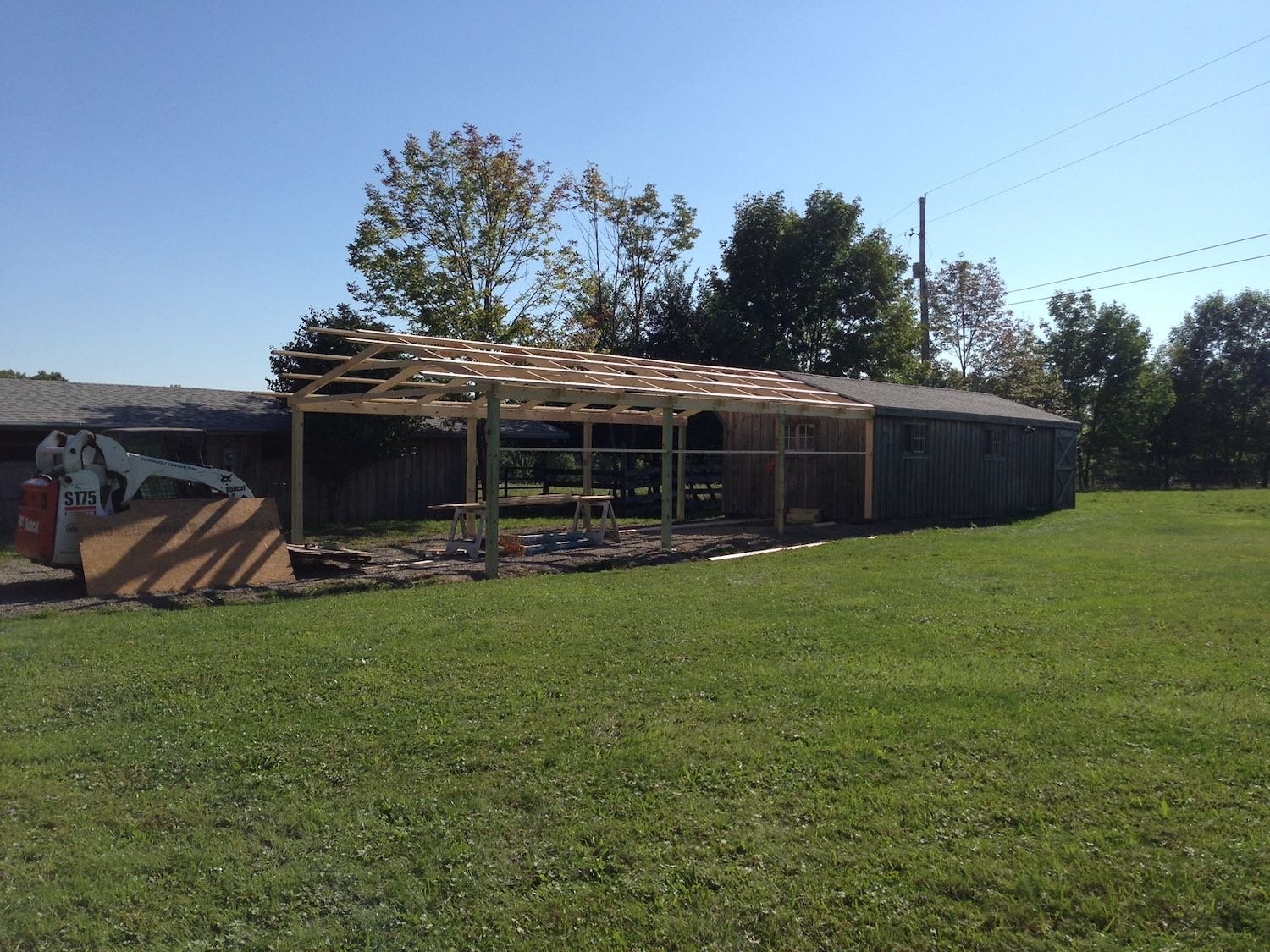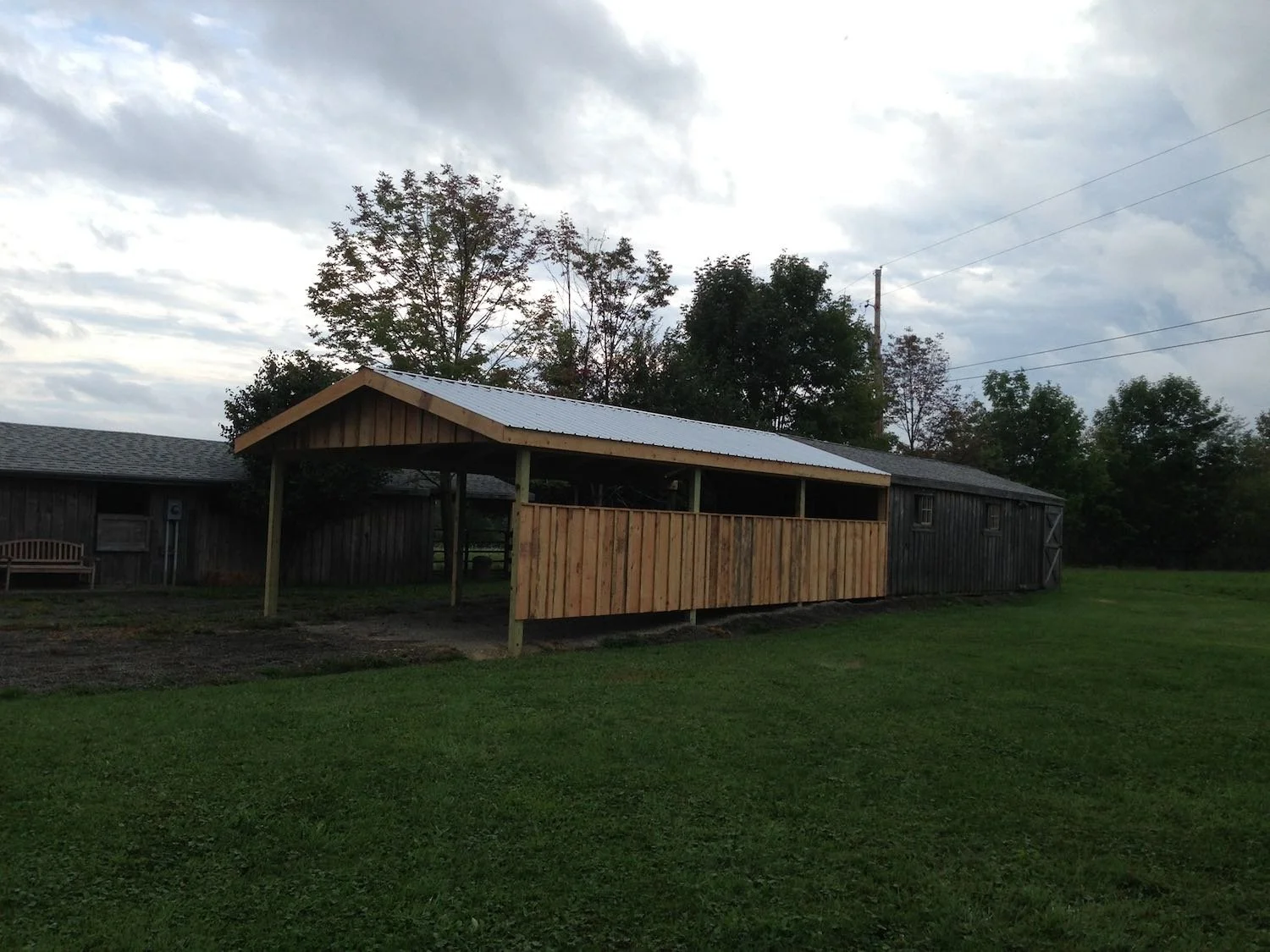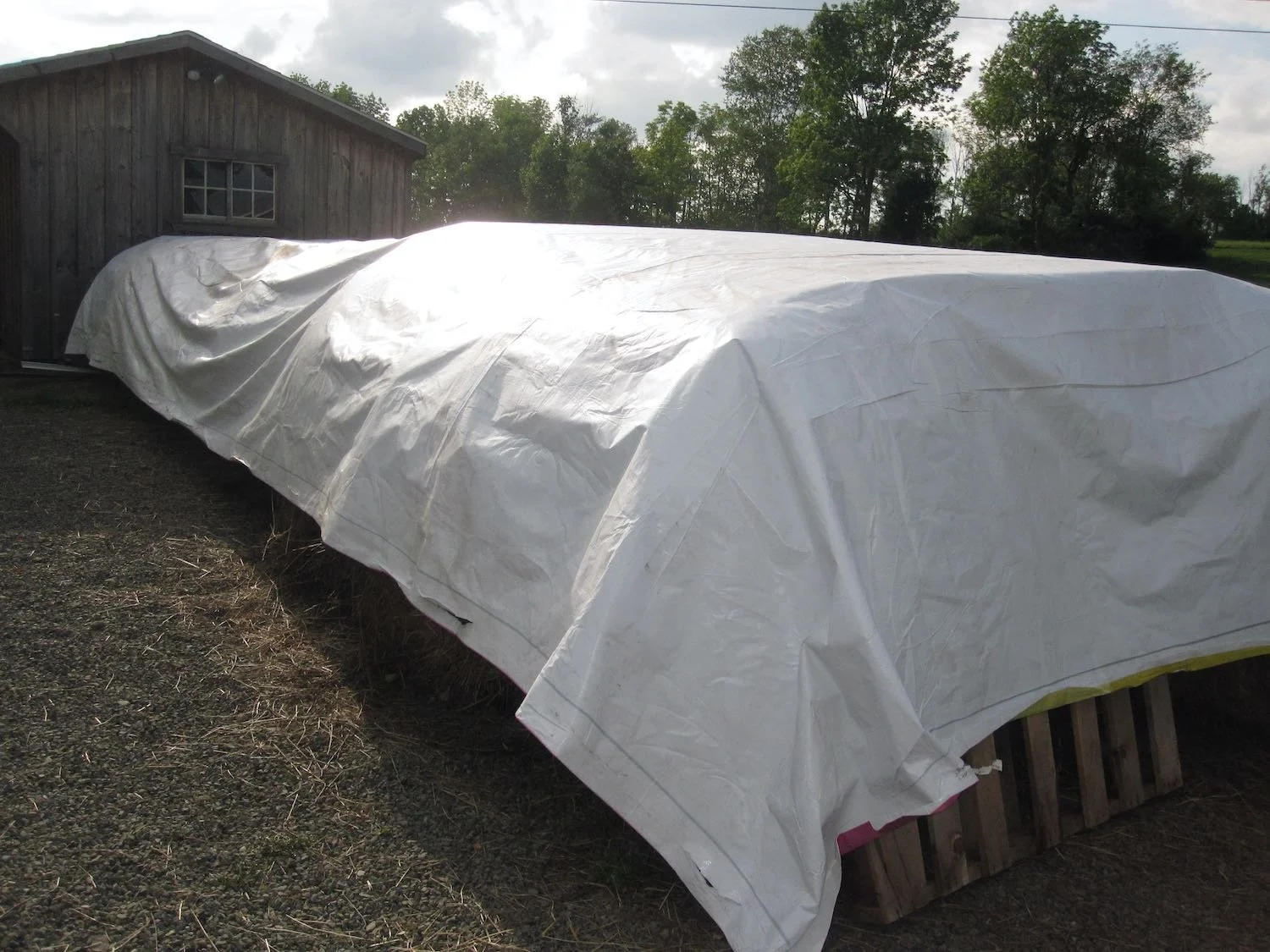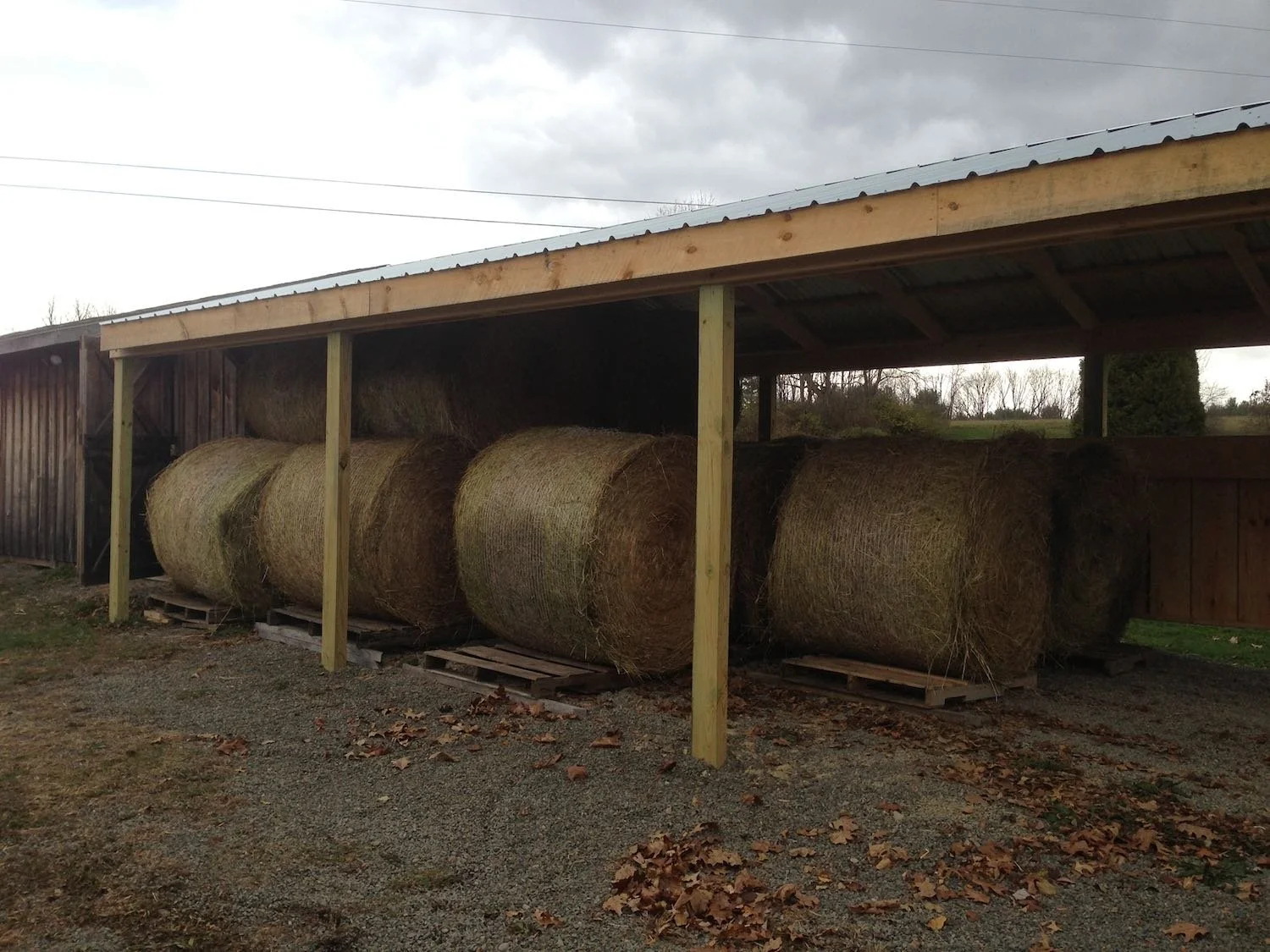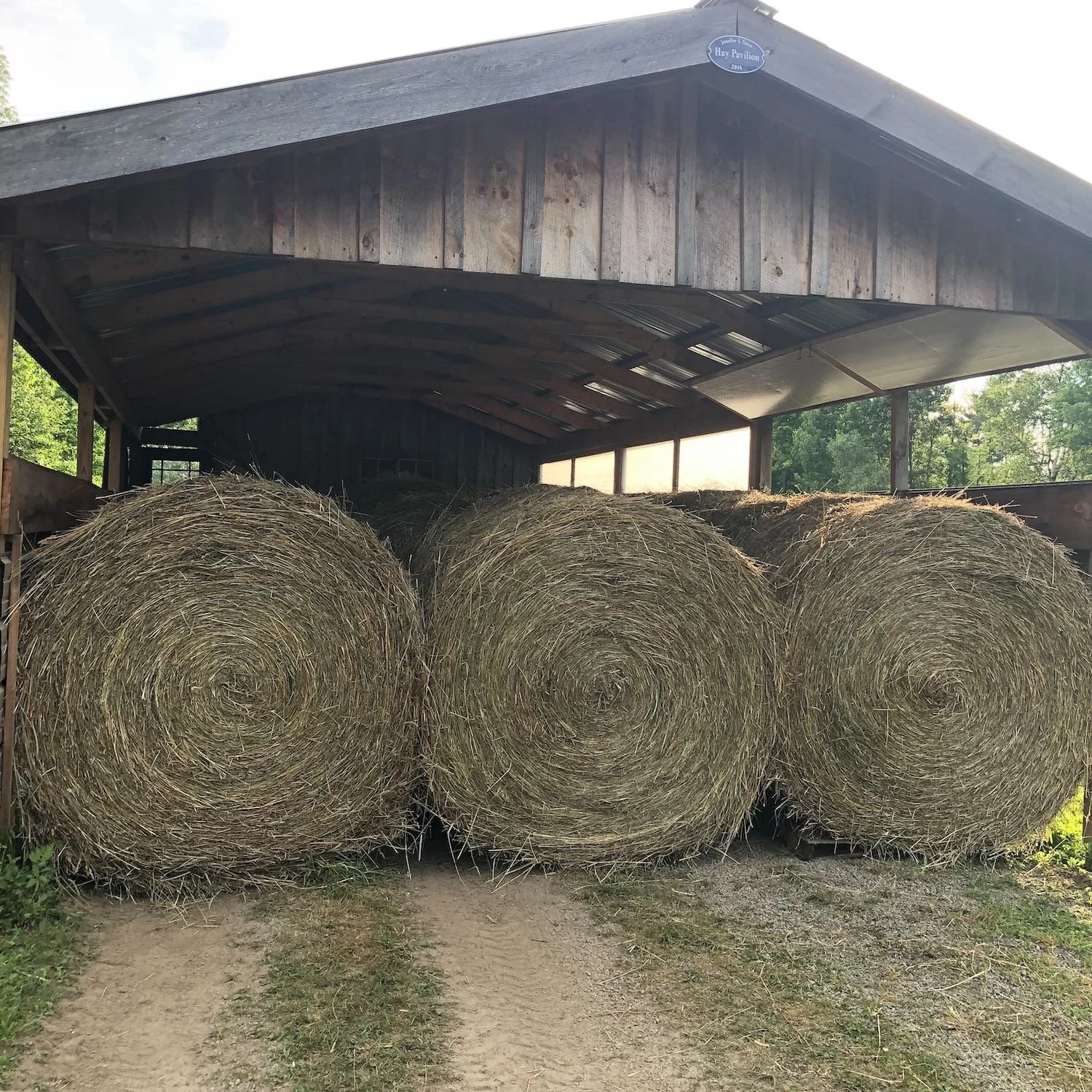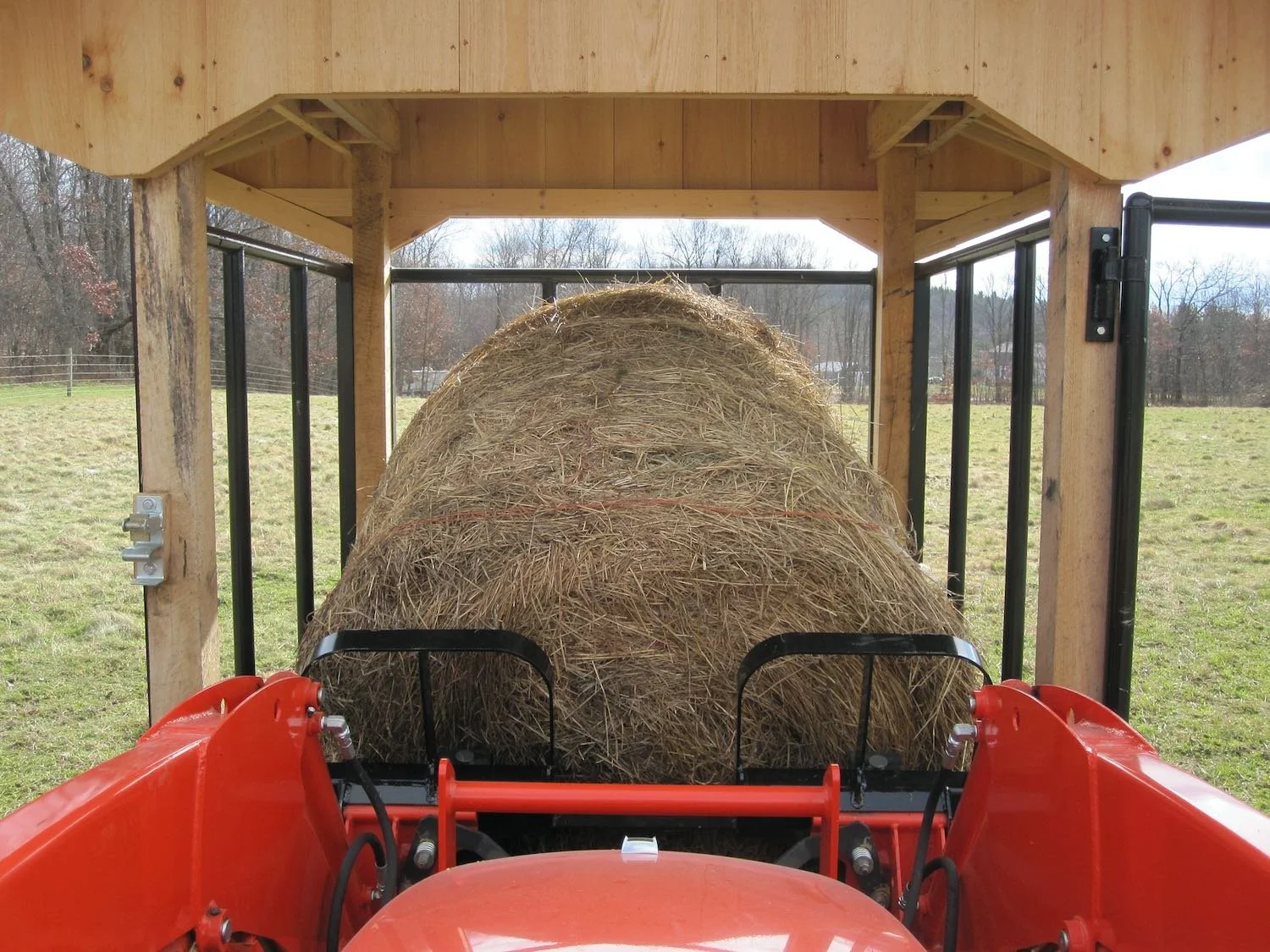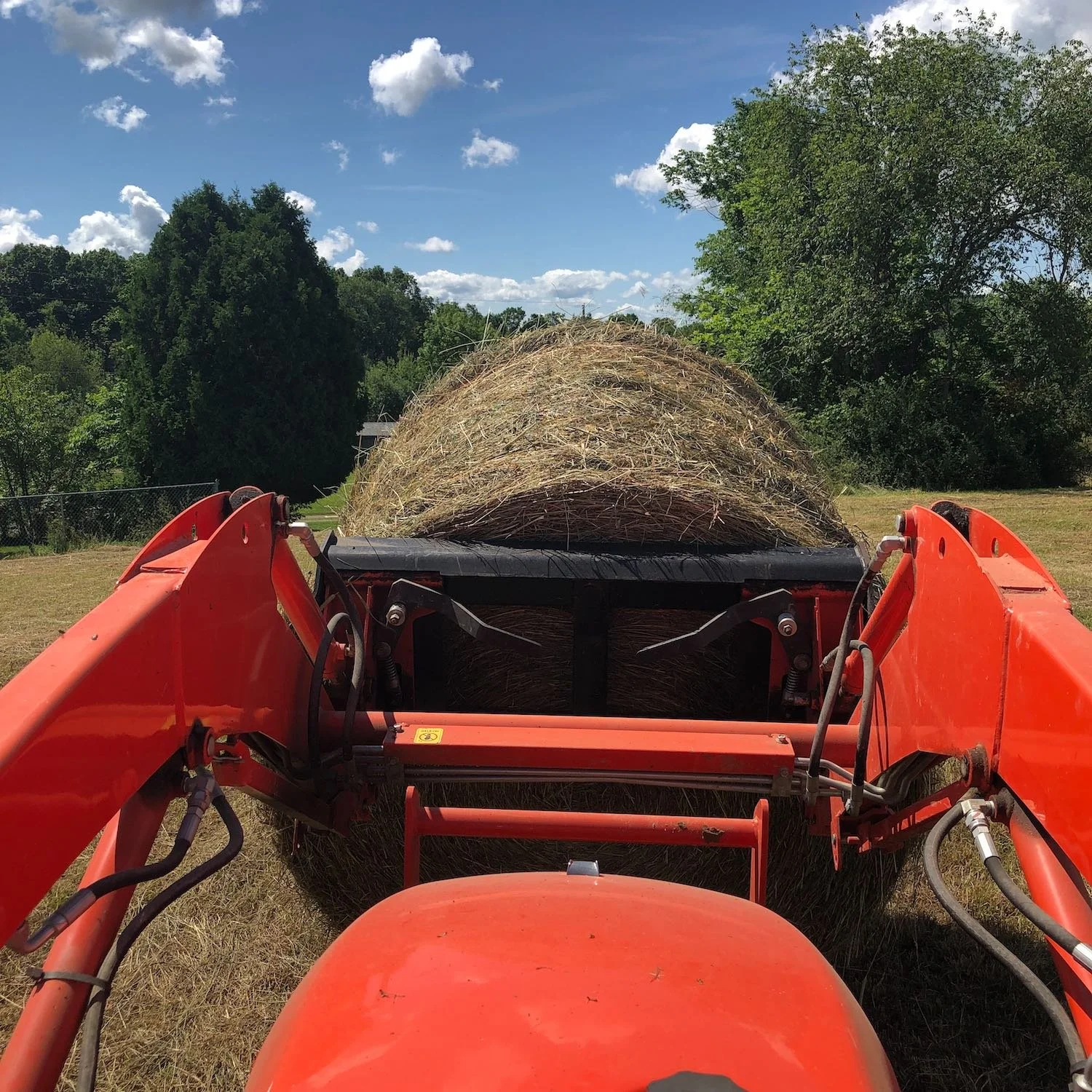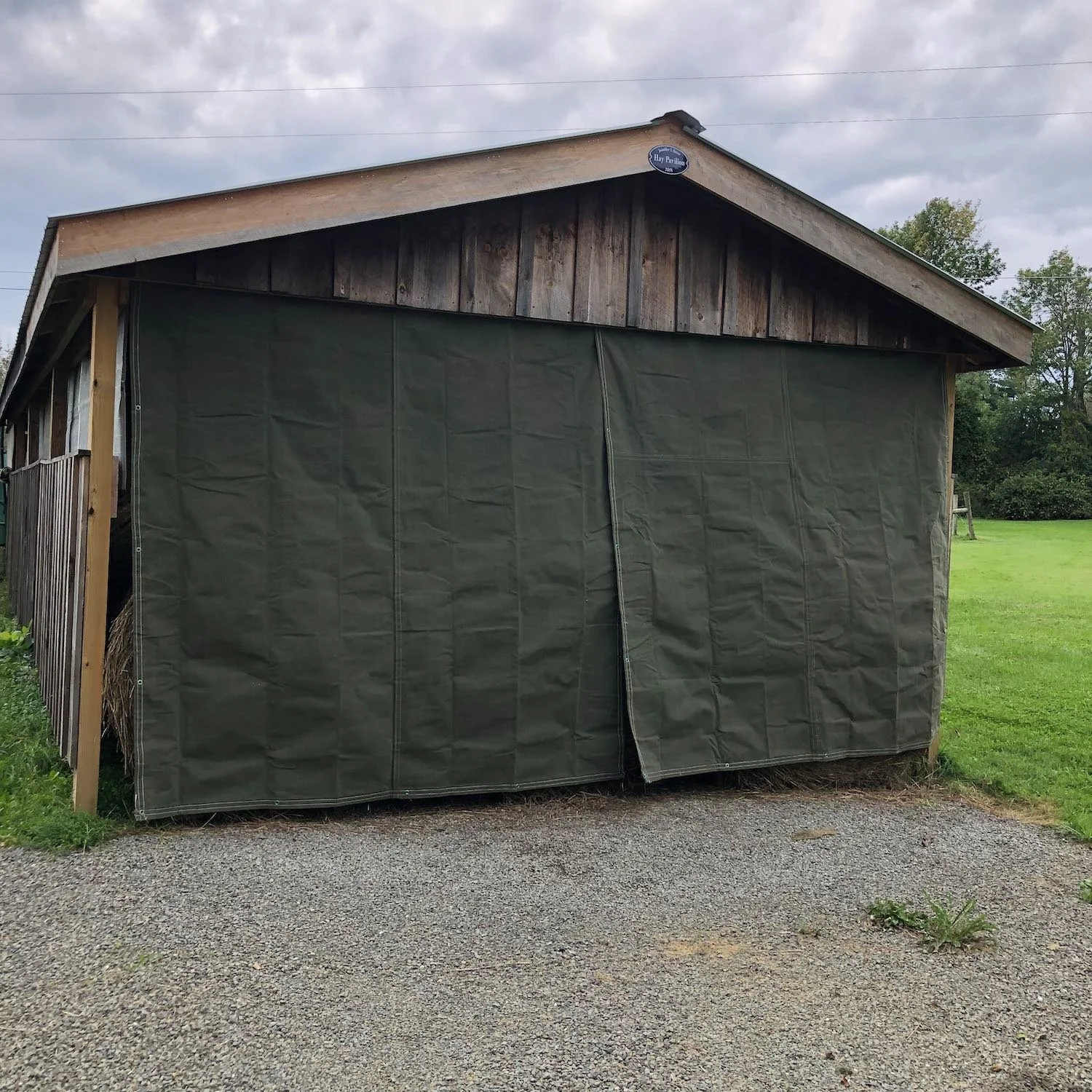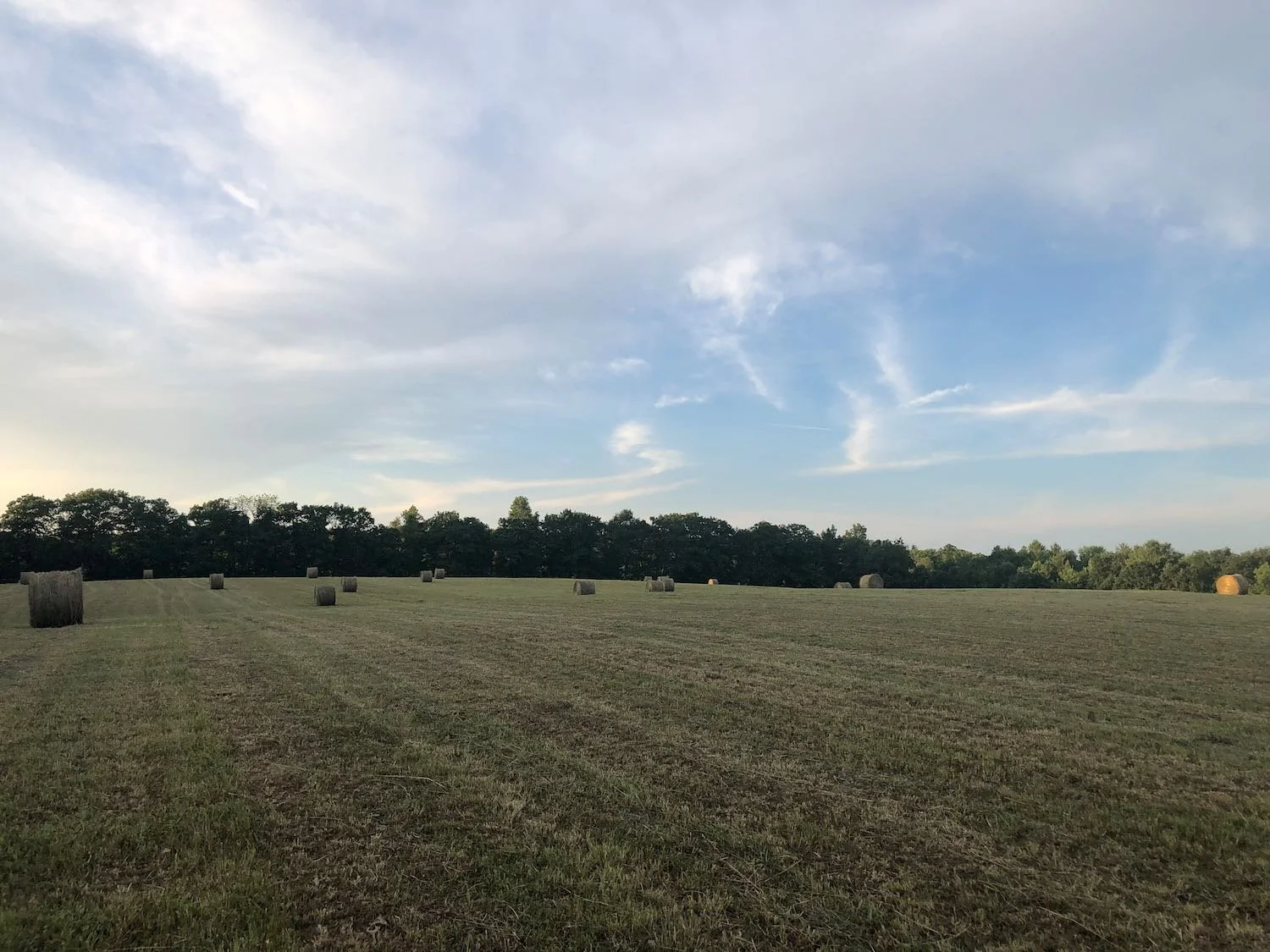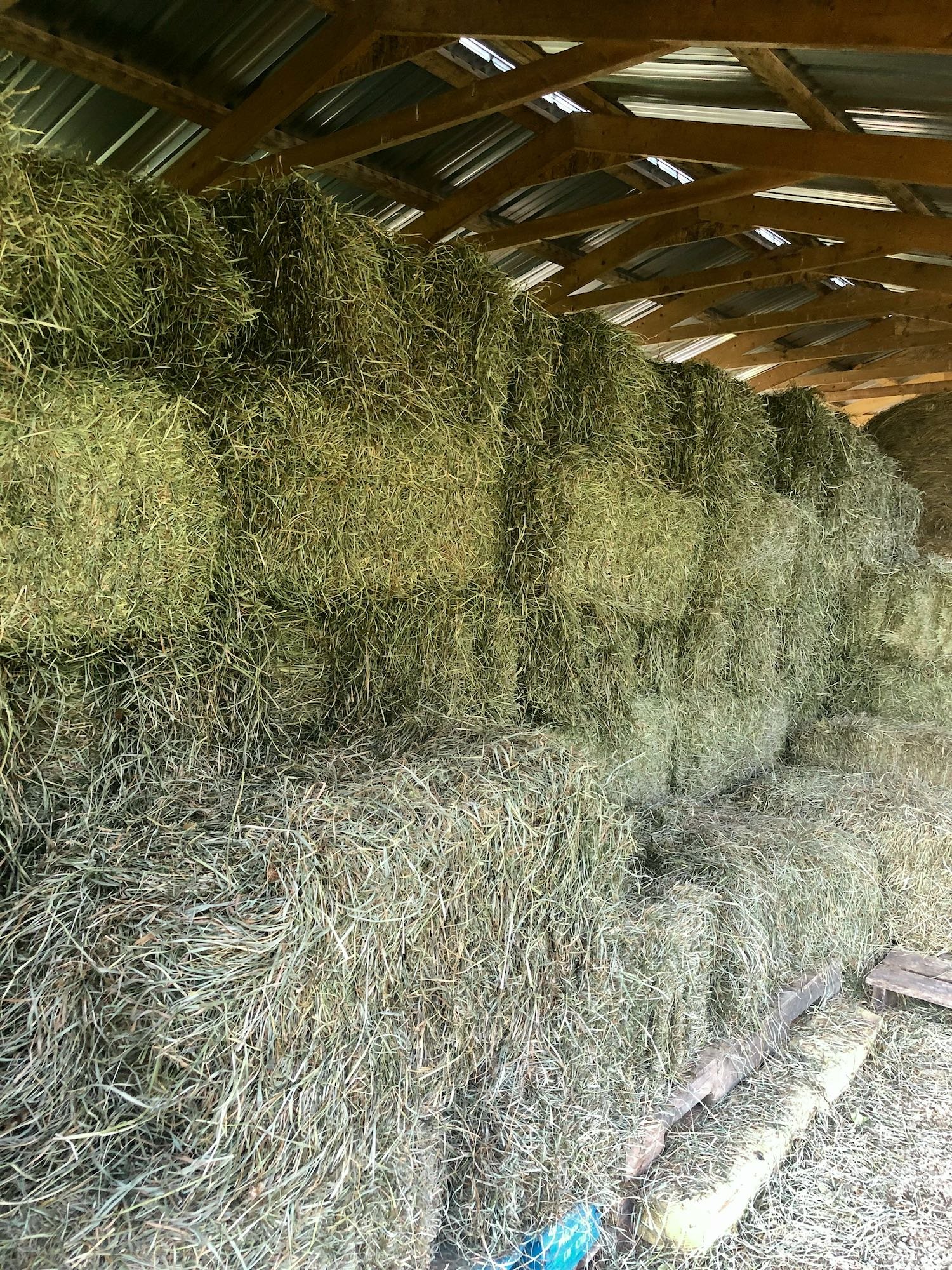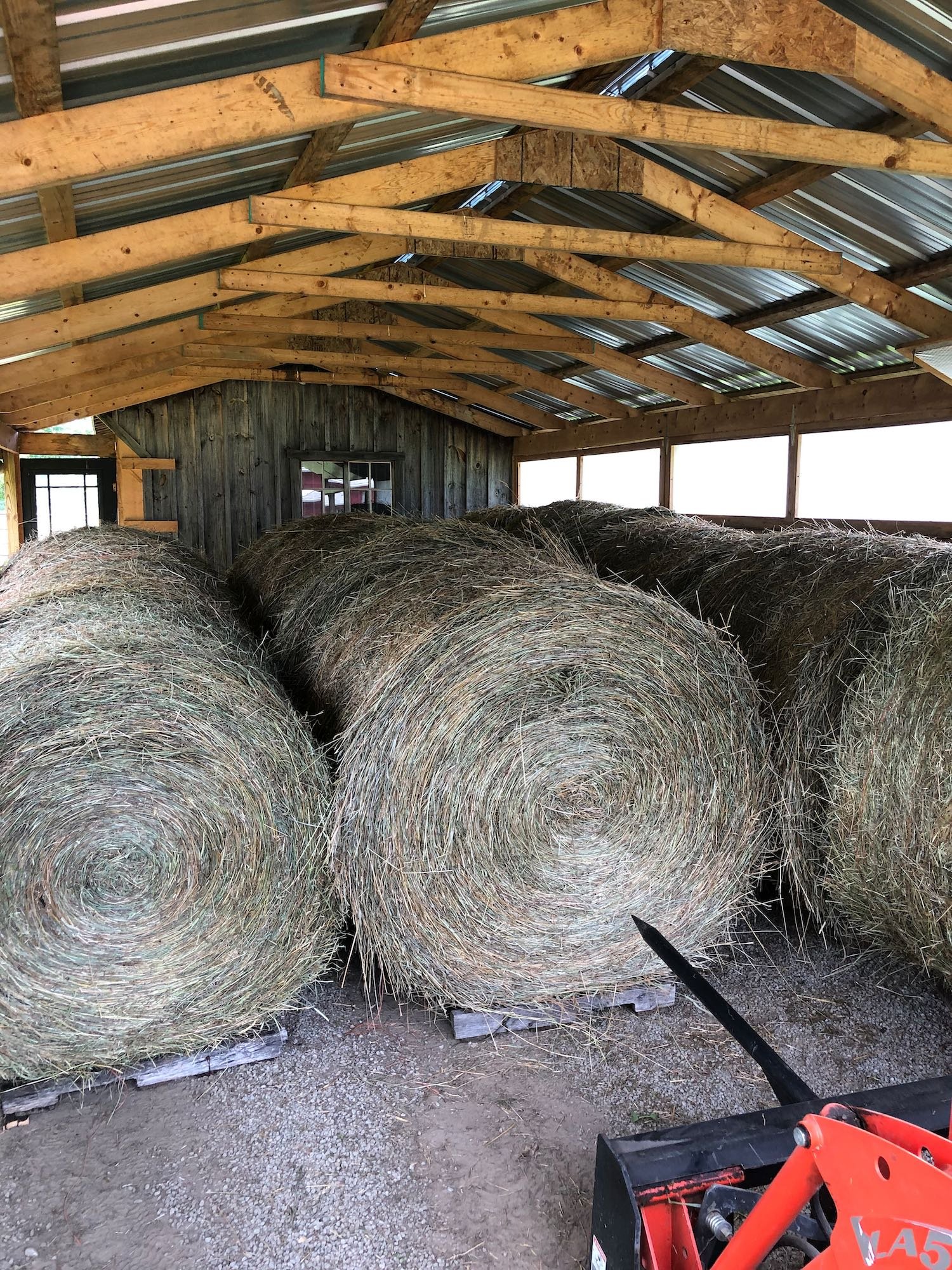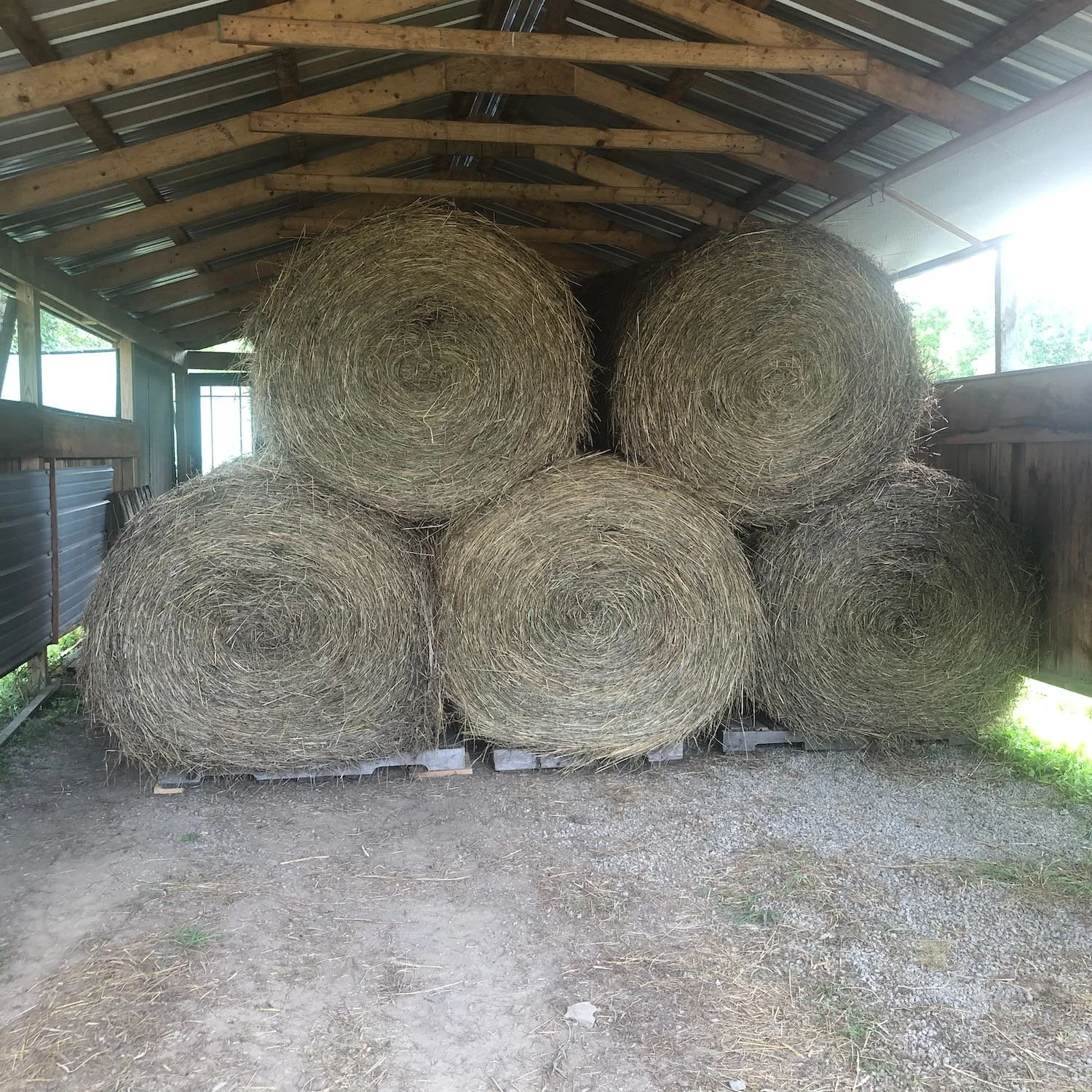Hay Pavilion
Summer 2014
-
![]()
Construction day!
-
![]()
Another view of the site.
The pavilion was added to the left side of the barn in the foreground.
-
![]()
A few posts in place.
-
![]()
The pavilion is starting to take shape.
-
![]()
Looking good.
-
![]()
Lots of rafters.
-
![]()
Lots of progress!
-
![]()
Ready for hay.
At first we left the entire wall on the left open, but eventually covered it to match the right side for more protection against the elements. The hay pavilion was made possible through a donation by our friend Jennifer Saver.
-
![]()
Our covered round bale feeder.
This feeder has been great protection from rain and snow. We have since added a tarp to one and a half sides and boards across the front to minimize hay waste.
-
![]()
The old system.
Before the pavilion was built, we covered our round bales with a recycled billboard, which is just a huge heavy tarp. We had to stake and tie down the sides to prevent the winds from carrying it away during some storms. It was a bear to peel back the snow covered tarp when we needed a bale. Each bale is stored on top of a pallet to keep it from getting wet.
-
![]()
Our first load of hay arrives!
Before we started baling our own, we purchased bales from local farmers.
-
![]()
Only 7 bales lasted all winter.
In the old days, back when we had only two cows, seven round bales plus a few hundred square bales would get us through the winter.
-
![]()
Windows added to sides.
-
![]()
Delivering a bale to the feeder.
We use a spear to deliver the bales ranging in weight from 600-800 pounds to the feeder.
-
![]()
Bringing bales down from the hill.
It’s a bit of a drive from the top of our hill down to the pavilion. Each bale takes about 15 minutes to make the trip, so we always hope for the perfect summer day with no rain. We’re not always that lucky! : )
-
![]()
New tarps in front.
This year we added two tarps to the front to keep snow out. When we had the calf barn built, we added 10 feet onto the hay pavilion because we already ran out of room for hay storage.
-
![]()
Our hay field.
We have about 16 acres of timothy mix hay that we harvest and share with the farmer who does the baling. Some years produce a better yield than others, it all depends on weather and rainfall.
-
![]()
200 square bales.
We supplement our round bale supply with second cutting timothy square bales from a local farmer. These are fed as treat hay, and also in an emergency when there is so much snow that we are unable to bring a round bale out to the feeder. They weigh about 35 - 40 pounds each.
-
![]()
One layer.
This photo was taken back when we could get away with one layer of bales. We need so many now that we stack them so each row has five instead of three.
-
![]()
Ready for winter.

